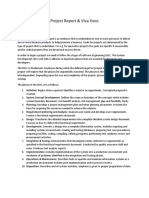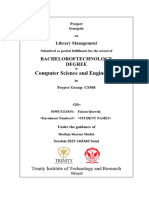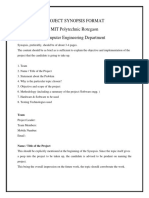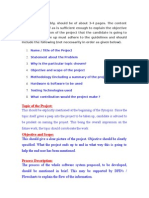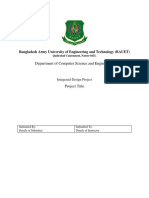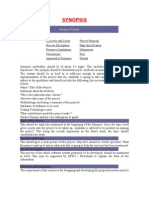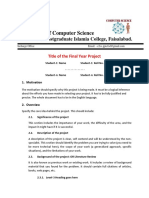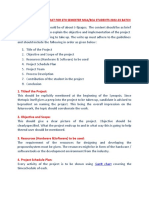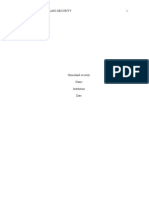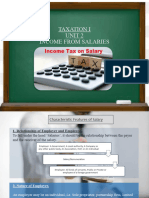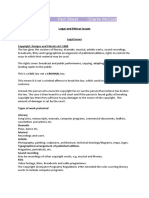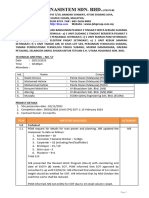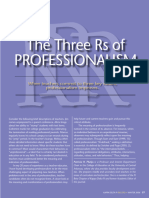0% found this document useful (0 votes)
250 views5 pagesMajorProject - Synopsis Format
This document is a synopsis template for a Bachelor's degree project in Computer Application at Poornima University. It outlines the structure and essential components required for the project submission, including sections such as the abstract, introduction, problem statement, objectives, literature review, feasibility study, and methodology. Additionally, it provides guidelines on formatting, project timelines, and questions students should be prepared to answer upon submission.
Uploaded by
bhavyabhagchandani16Copyright
© © All Rights Reserved
We take content rights seriously. If you suspect this is your content, claim it here.
Available Formats
Download as DOCX, PDF, TXT or read online on Scribd
0% found this document useful (0 votes)
250 views5 pagesMajorProject - Synopsis Format
This document is a synopsis template for a Bachelor's degree project in Computer Application at Poornima University. It outlines the structure and essential components required for the project submission, including sections such as the abstract, introduction, problem statement, objectives, literature review, feasibility study, and methodology. Additionally, it provides guidelines on formatting, project timelines, and questions students should be prepared to answer upon submission.
Uploaded by
bhavyabhagchandani16Copyright
© © All Rights Reserved
We take content rights seriously. If you suspect this is your content, claim it here.
Available Formats
Download as DOCX, PDF, TXT or read online on Scribd
/ 5
